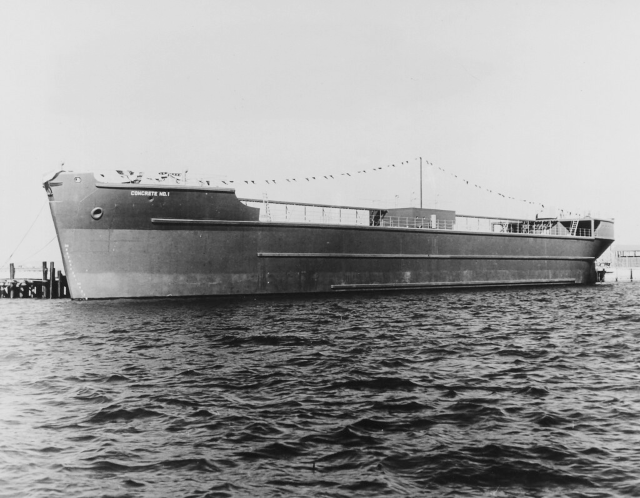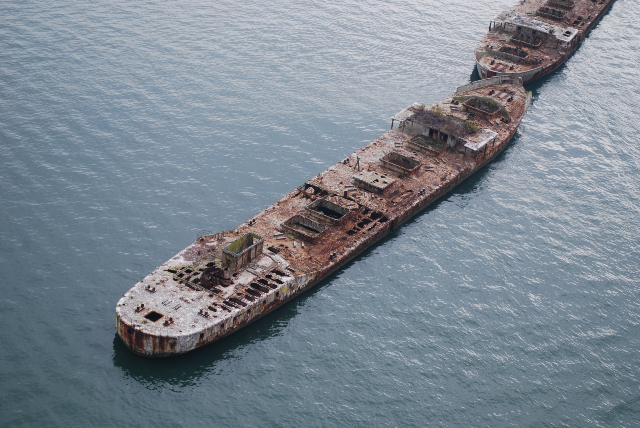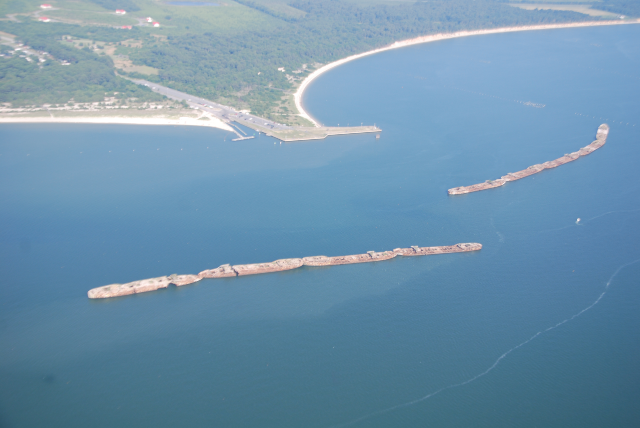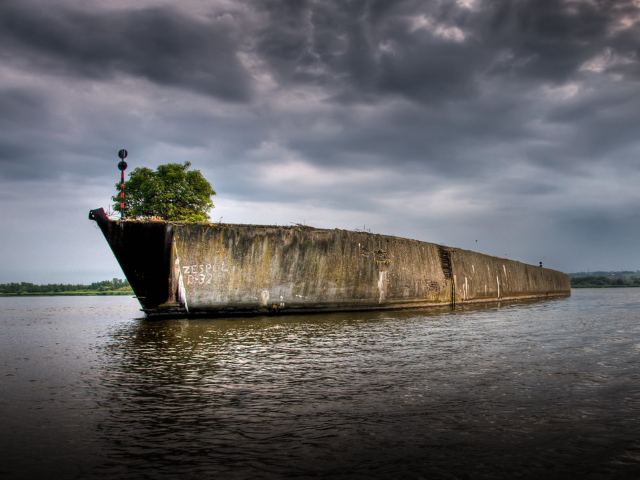[imagesource:zymonstomma]
One of the last construction materials we might associate with cargo ships is concrete. It’s not a very floaty material, and yet even in our modern era, there are still a few of these concrete ships sailing our oceans.
The first concrete boat was built by Frenchman J.L. Lambot in 1848. The shipbuilder constructed a series of rowboats using a procedure he called “Fericement.”
Fericement is a forerunner of what is known today as ferro-cement. This is because steel rods are used to form a wire mesh that creates a skeleton of the ship’s hull, over which concrete is poured to form the hull. It’s important to note that these were not ‘cement’ boats, but rather concrete – which is a mixture of cement, water and sand.
The 84-foot Namsenfjord, designed and built by Norwegian shipbuilder N.K. Fougner was the first practical seagoing ship made of concrete. He began by building concrete barges based on a 1912 patent finished in 1917.
During World War I, there was a catastrophic loss of shipping due to submarine warfare, and this prompted the United States Shipping Board to embark on a large-scale shipbuilding programme. Concrete ships became crucial to the war effort due to a steel shortage, and the fact that a concrete hull requires around a third less steel per deadweight tonne than a steel ship.
One of the frontrunners in commercial concrete ships was San Francisco businessman L. Comyn, who started construction in 1917 on the steamship Faith. At the time, it was the largest concrete ship in the world and the first built in America. The Faith was a single screw steamer of 3,427 gross tons that could reach a speed of 10 knots.
To get a stronger bond between the steel and concrete, Comyn used bent bars with lugs. The side and bottom slabs were about 11 centimetres thick and diagonally reinforced. The bridge, forecastle, and main decks were still made of wood, as were the cargo hold ceilings. The hull of the ship was rather blunt and not at all ‘pretty’. The Faith cost the shipyard $750,000 (R13 million) to build at the time.

The war ended soon after that, and with more reliable and available materials and ships, the concrete cargo ships became less economical to operate, and by the 1920s, most of these ships were either used as breakwaters or redesigned as piers.


Eventually, these commercial ships were taken over by the army, for use as storage or training in the South Pacific during the war.
Of all the concrete ships built, the Faith was the most commercially successful, with three years in service. The ship sailed the Pacific, Mediterranean and Atlantic Oceans before becoming a breakwater in Cuba in 1922.

No story about shipping would ever be complete without mentioning our partners at Berry & Donaldson. Despite being in the freight forwarding business for 50 years, they only use the most modern forms of transportation to get your freight delivered. So no concrete ships for your precious cargo.
If you want something delivered quickly, give them a call.
[source:freightwaves]





